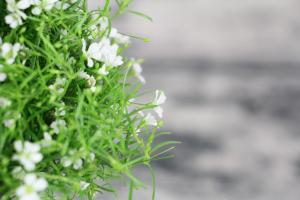How Far Apart Should Pear Trees be Planted
Pear trees are a great addition to any garden or orchard. They are beautiful and fruit-bearing, and can even help pollinate other plants in the area. They also require ample space to grow, so it is important to know how far apart they should be planted. In this article, we’ll discuss some factors to consider when planting pear trees and how much space they need to thrive.
Choosing the Right Location
The first step in deciding how far apart to plant pear trees is to pick the right location for your orchard or garden. Pear trees prefer full sun and well-drained, loamy soils that are rich in organic matter. They do not thrive in locations that have wet soils, as this can cause root rot and other diseases. Additionally, pear trees require regular irrigation, especially during hot, dry spells, so it is important to ensure that a water source is nearby.
Spacing Considerations
When it comes to spacing pear trees, there are a few factors to consider. One key consideration is the growth habit of the trees. Pear trees can reach heights of up to 40 feet, but most cultivars top out around 20 to 25 feet. Additionally, pear trees can spread 10 to 15 feet in diameter at maturity. For this reason, it is recommended that trees be planted 15 to 20 feet apart to give them ample space to grow and mature.
Another factor to consider is pollination. Many pear tree cultivars require cross-pollination with another pear tree to produce fruit. This means that you should plant at least two pear trees within close proximity. The exact distance will depend on the cultivar and pollination requirements. For example, some cultivars, such as Bartlett, require cross-pollination with another variety of pear tree, while other cultivars, such as Kieffer, are self-pollinating.
Training and Pruning the Trees
Once your pear trees are planted, it is important to train and prune them to ensure they grow into healthy, productive trees. Training involves shaping the trees during the first few years of growth and pruning involves removing dead or diseased wood and shaping the tree in subsequent years. Pear trees should be trained to a central leader or modified leader system, which involves selecting a main trunk and then removing any competing branches. Pruning should be done annually in late winter or early spring to encourage new growth and maintain tree health.
Conclusion
In summary, pear trees require ample space to grow and mature, and should be planted 15 to 20 feet apart to ensure they have enough room to thrive. When planting pear trees, it is important to consider factors such as pollination requirements and the growth habit of the tree. Additionally, proper training and pruning are essential for maintaining healthy and productive trees. By following these guidelines, you can enjoy the beauty and bounty of pear trees for years to come.

 how many times do yo...
how many times do yo... how many planted tre...
how many planted tre... how many pine trees ...
how many pine trees ... how many pecan trees...
how many pecan trees... how many plants comp...
how many plants comp... how many plants can ...
how many plants can ... how many plants and ...
how many plants and ... how many pepper plan...
how many pepper plan...































